25 Feb 2022 | Non categorizzato
Faced with the events that have been shaking the world for days, the Political Movement for Unity, which draws its inspiration from the experience and ideals of the Focolare Movement, affirms its common commitment to peace, which can only be achieved through concrete ‘doing’. “If you want peace, prepare for peace” are the words of Igino Giordani, a pacifist politician of the 20th century. Only a daily and multipronged peace effort can stop war. History has already declared too often that war is a crazy choice. The means of confrontation are outdated and open the way to greater insecurity, both locally and globally. Of this we are convinced, we politicians, officials, citizens and diplomats of the Politics for Unity Movement. From all over the world we express our closeness to the peoples suffering this tragic war, while we strongly support those who, in various capacities, continue to negotiate for peace, the only true solution. It is never too late to reopen negotiation and dialogue, in the short and long term. May the imperative of peace guide us. We single out these three main directions for commitment: 1 – Often the creation of nation states has not been a free choice of peoples, but the result of post-war negotiating tables, legacies of imperialisms. Old and new divisions call for a courageous political effort that gives new meaning to national identities, that challenges continental unions, first and foremost the European Union, beyond their immediate interests. 2- History teaches that economic sanctions leave governments unscathed and impoverish civil society, women, men and especially children. Syria is the latest, most serious example. The choice of sanctions must be pursued cautiously, so that it does not become part of the logic of war and power struggles. Politics must be able to control the arms and carbon industry circuits, and only in this way can true peace be built. 3- In the face of the resurgence of nuclear weapons and their strategic enhancement, today we appeal strongly to our governments to sign and implement the Treaty on the Prohibition of Nuclear Weapons, adopted by only 122 states on 7th July 2017. The political power of the UN must be brought back into action and the voice of governments must be integrated with the voice of the cities of the earth, gathered in a special world assembly, to give more strength to our peoples. In these times when the naked power of force seems to prevail, we do not hesitate to affirm that we still believe, and will always believe, in peacebuilding, in the processes of dialogue, in the tools of politics. It is the components of civil society, with the spiritual and cultural strength of their faiths, and with their many good practices, that will bring to light the great ideals that sustain history. May our representatives silence their weapons as soon as possible and listen to the women and men of peace.
Mario Bruno, president MPPU (Politics for Unity Movement)
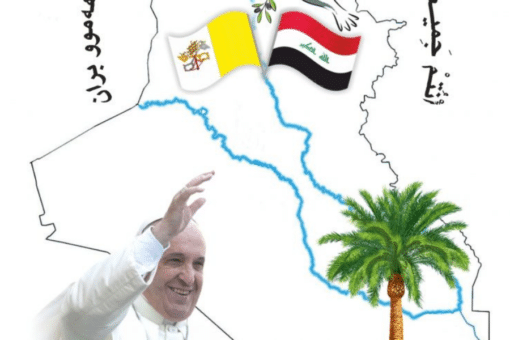
12 Mar 2021 | Non categorizzato
In recent days, many people have tried to take stock of Pope Francis’ trip to Iraq. I think it is difficult, if not impossible, to attempt an exhaustive one. There are too many issues involved and, above all, we are too close to this global event made up of so many other details that can only be read in the course of time. Obviously some elements more than others struck the imagination of those who followed the various events in a context that, in some ways, in its stark reality risked appearing surreal.  In fact, if we think of the model of papal journeys, inaugurated with Pope John Paul II from 1979 onwards, we were accustomed to quite different scenarios and backgrounds: oceanic crowds, choreographic preparation that often bordered on perfection and, above all, events that left the image, especially in the early years of the Polish pope’s era, of a strong faith, at the centre of history, in contrast to the atheistic world from which the Polish pope came. Pope Francis, who at the beginning of his pontificate had introduced the idea of another Church, the ‘accidental’ and ‘field hospital’ Church, in recent years has been committed to transmitting this image of the Church and has done so practically everywhere he has gone. He has done so practically everywhere he has gone. From his first official trip to Lampedusa, the port and cemetery of migrants, to Bangui, where he opened the door that inaugurated his unexpected and extraordinary Jubilee, to Mosul, where the stage had only rubble and walls still perforated by bullets of various calibers as a backdrop. And we cannot forget Tacloban where he braved an impending typhoon to stand by the survivors of another catastrophic event, Lesbos where he spent unhurriedly precious time listening to the unspeakable stories of refugees of various origins. The lesson of Francis is not just about showing that the most precious face of the Church is the ‘accidental’ one. Rather, it is the way in which he shows the ‘proximity’, the warmth that needs to be felt by those who suffer in the Christian community. Above all, he is committed to projecting these communities onto the world stage to say that this is the true Church, which we should all cherish and which bears real witness to Christ. As he said on his return flight, Bergoglio is breathing at these junctures, because this is his Petrine call, the one for which the conclave elected him, without knowing and imagining where he would lead Peter’s boat. We are all seeing and experiencing this in recent years. And the voyages are probably the truest reflection of this, leaving no room for misunderstandings. On the other hand, this is nothing new. Like his predecessors, the Argentine pope has shown that he is able to read and decode the ‘signs of the times’ and offers credible testimony to the fact that the Church is a witness to its time and intercepts its problems and key issues, offering answers that are almost always against the current with respect to those that the political, international and, today, financial world impose. Faced with the reality that Francis found himself living, including the unprecedented one (at least in these terms) of the pandemic, the essential category of the pontificate, confirmed also in Iraq, is fraternity. Bergoglio’s personal and ecclesial testimony, his Magisterium and his relations, especially but not only with the Muslim world, now make fraternity a geopolitical element. This was also demonstrated by his meeting with the Grand Ayatollah al-Sistani. The implications of those forty-five minutes are fundamental. We all know, in fact, that the great knot that Islam must untie today is internal to its own world: the tension, never appeased but now dangerously acute, between the Sunni and Shiite spheres. It is here that the roots of many of the problems that Muslims experience and for which many also die must be sought. Bergoglio has shown great ‘political’ tact in wanting to meet al-Sistani, the most significant representative of Shiism, well distanced from the Iranian theocracy that since the Khomeinist revolution of the 1980s has pushed the Iranian world to be a champion of this fringe of the Muslim kaleidoscope. Al-Sistani has always distanced himself from the theocratic choice of the Iranian ayatollahs, and has been an acknowledged spiritual and religious leader for decades. Among other things, he was born in Iran. The meeting between the two leaders took place behind closed doors, but as Pope Francis described it on the return flight, it was a moment of spirituality, “a universal message. I felt the duty, […] to go and see a great, a wise man, a man of God. And only by listening to him do you perceive this. […] And he is a person who has that wisdom … and also prudence. […] And he was very respectful, very respectful in the meeting, and I felt honoured. Even in the greeting: he never gets up, and he got up, to greet me, twice. He is a humble and wise man. This meeting had a great positive impact on my soul”. Bergoglio ventured an appreciation that perhaps no pope had had the courage to say in the past: “And these wise men are everywhere, because God’s wisdom has been spread throughout the world. It is the same with the saints, who are not only those on the altars. They are the everyday saints, the ones I call ‘next door’, the saints – men and women – who live their faith, whatever it may be, with consistency, who live human values with consistency, fraternity with consistency”. All this did not go unnoticed. Positive comments poured down from many quarters, starting with the Muslim world itself. Sayyed Jawad Mohammed Taqi Al-Khoei, secretary general of the Al-Khoei Institute in Najaf, a prominent member of the Iraqi Shiite world and director of the Al-Khoei Institute which is part of the Hawza of Najaf, a religious seminary founded 1,000 years ago for Shiite Muslim scholars, was very clear in his appreciation. “Although this is the first meeting in history between the head of the Shia Islamic establishment and the head of the Catholic Church, this visit is the fruit of many years of exchanges between Najaf and the Vatican and will undoubtedly strengthen our interreligious relations. It was also a historic moment for Ira”. Al-Khoei affirmed the commitment to “continue strengthening our relations as institutions and individuals. We will soon travel to the Vatican to ensure that this dialogue continues, develops and does not stop here. The world faces common challenges and these challenges cannot be solved by any state, institution or person alone”.The AsiaNews agency also reports some of the positive comments that appeared in the Iranian press, which gave wide coverage and celebrated the historic meeting as an “opportunity for peace”. The news was the opening headline in the Islamic Republic’s newspapers and media outlets. Sazandegi, who is close to the reformist wing, emphasised that the two religious leaders are today “the standard-bearers of world peace”. He called their face-to-face meeting in the home of the Shiite spiritual leader ‘the most effective event [in the history of] dialogue between religions’.
In fact, if we think of the model of papal journeys, inaugurated with Pope John Paul II from 1979 onwards, we were accustomed to quite different scenarios and backgrounds: oceanic crowds, choreographic preparation that often bordered on perfection and, above all, events that left the image, especially in the early years of the Polish pope’s era, of a strong faith, at the centre of history, in contrast to the atheistic world from which the Polish pope came. Pope Francis, who at the beginning of his pontificate had introduced the idea of another Church, the ‘accidental’ and ‘field hospital’ Church, in recent years has been committed to transmitting this image of the Church and has done so practically everywhere he has gone. He has done so practically everywhere he has gone. From his first official trip to Lampedusa, the port and cemetery of migrants, to Bangui, where he opened the door that inaugurated his unexpected and extraordinary Jubilee, to Mosul, where the stage had only rubble and walls still perforated by bullets of various calibers as a backdrop. And we cannot forget Tacloban where he braved an impending typhoon to stand by the survivors of another catastrophic event, Lesbos where he spent unhurriedly precious time listening to the unspeakable stories of refugees of various origins. The lesson of Francis is not just about showing that the most precious face of the Church is the ‘accidental’ one. Rather, it is the way in which he shows the ‘proximity’, the warmth that needs to be felt by those who suffer in the Christian community. Above all, he is committed to projecting these communities onto the world stage to say that this is the true Church, which we should all cherish and which bears real witness to Christ. As he said on his return flight, Bergoglio is breathing at these junctures, because this is his Petrine call, the one for which the conclave elected him, without knowing and imagining where he would lead Peter’s boat. We are all seeing and experiencing this in recent years. And the voyages are probably the truest reflection of this, leaving no room for misunderstandings. On the other hand, this is nothing new. Like his predecessors, the Argentine pope has shown that he is able to read and decode the ‘signs of the times’ and offers credible testimony to the fact that the Church is a witness to its time and intercepts its problems and key issues, offering answers that are almost always against the current with respect to those that the political, international and, today, financial world impose. Faced with the reality that Francis found himself living, including the unprecedented one (at least in these terms) of the pandemic, the essential category of the pontificate, confirmed also in Iraq, is fraternity. Bergoglio’s personal and ecclesial testimony, his Magisterium and his relations, especially but not only with the Muslim world, now make fraternity a geopolitical element. This was also demonstrated by his meeting with the Grand Ayatollah al-Sistani. The implications of those forty-five minutes are fundamental. We all know, in fact, that the great knot that Islam must untie today is internal to its own world: the tension, never appeased but now dangerously acute, between the Sunni and Shiite spheres. It is here that the roots of many of the problems that Muslims experience and for which many also die must be sought. Bergoglio has shown great ‘political’ tact in wanting to meet al-Sistani, the most significant representative of Shiism, well distanced from the Iranian theocracy that since the Khomeinist revolution of the 1980s has pushed the Iranian world to be a champion of this fringe of the Muslim kaleidoscope. Al-Sistani has always distanced himself from the theocratic choice of the Iranian ayatollahs, and has been an acknowledged spiritual and religious leader for decades. Among other things, he was born in Iran. The meeting between the two leaders took place behind closed doors, but as Pope Francis described it on the return flight, it was a moment of spirituality, “a universal message. I felt the duty, […] to go and see a great, a wise man, a man of God. And only by listening to him do you perceive this. […] And he is a person who has that wisdom … and also prudence. […] And he was very respectful, very respectful in the meeting, and I felt honoured. Even in the greeting: he never gets up, and he got up, to greet me, twice. He is a humble and wise man. This meeting had a great positive impact on my soul”. Bergoglio ventured an appreciation that perhaps no pope had had the courage to say in the past: “And these wise men are everywhere, because God’s wisdom has been spread throughout the world. It is the same with the saints, who are not only those on the altars. They are the everyday saints, the ones I call ‘next door’, the saints – men and women – who live their faith, whatever it may be, with consistency, who live human values with consistency, fraternity with consistency”. All this did not go unnoticed. Positive comments poured down from many quarters, starting with the Muslim world itself. Sayyed Jawad Mohammed Taqi Al-Khoei, secretary general of the Al-Khoei Institute in Najaf, a prominent member of the Iraqi Shiite world and director of the Al-Khoei Institute which is part of the Hawza of Najaf, a religious seminary founded 1,000 years ago for Shiite Muslim scholars, was very clear in his appreciation. “Although this is the first meeting in history between the head of the Shia Islamic establishment and the head of the Catholic Church, this visit is the fruit of many years of exchanges between Najaf and the Vatican and will undoubtedly strengthen our interreligious relations. It was also a historic moment for Ira”. Al-Khoei affirmed the commitment to “continue strengthening our relations as institutions and individuals. We will soon travel to the Vatican to ensure that this dialogue continues, develops and does not stop here. The world faces common challenges and these challenges cannot be solved by any state, institution or person alone”.The AsiaNews agency also reports some of the positive comments that appeared in the Iranian press, which gave wide coverage and celebrated the historic meeting as an “opportunity for peace”. The news was the opening headline in the Islamic Republic’s newspapers and media outlets. Sazandegi, who is close to the reformist wing, emphasised that the two religious leaders are today “the standard-bearers of world peace”. He called their face-to-face meeting in the home of the Shiite spiritual leader ‘the most effective event [in the history of] dialogue between religions’.
Roberto Catalano
Source: Blog Whydontwedialogue
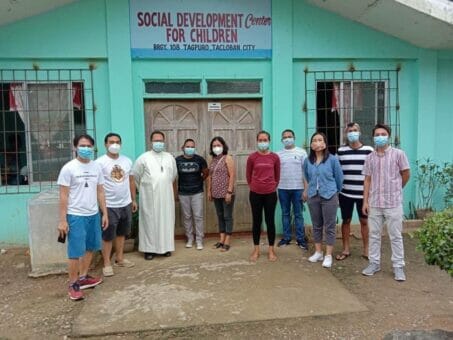
1 Jan 2021 | Non categorizzato
Four stories of those who “dare to care” every day: because there is no need to wait for World Peace Day to build a more united world. “May we never yield to the temptation to disregard others, especially those in greatest need, and to look the other way; instead, may we strive daily, in concrete and practical ways, “to form a community composed of brothers and sisters who accept and care for one another” The concluding words of Pope Francis’ message for January 1st 2021, the 54th World Day of Peace. .These words are a revolutionary programme for the lives of people and peoples for 2021 in which infinite hopes for peace are placed; a peace which goes from the fight against poverty, to a greater dignity of the person, to working to resolve all forms of conflict, and lastly (but not least) the safeguarding of the planet. We start this year 2021 with stories we have entitled ‘caring heroes ‘: people like us, or those who live next door to us, who have not missed out on precious opportunities to love and be close to others in the most diverse areas. The operating ground for caring is vast: it is as big as the world. Teens for Unity (Mexico) – “We wanted to carry out a project that had both a social and environmental impact, and we came up with the idea of collecting plastic cups to donate to a foundation that takes care of people suffering from cancer, to help them with the proceeds of our collection. In this way we have helped to respect the environment by recycling plastic and helping these people undergoing treatment. To date we have made 23 deliveries with a total of one million cups collected in less than a year! In addition to this we have collected recyclable waste and, with the proceeds, delivered food to the hospital, clothes to people with limited resources and helped nursing homes. We also planted trees in some parts of the city. 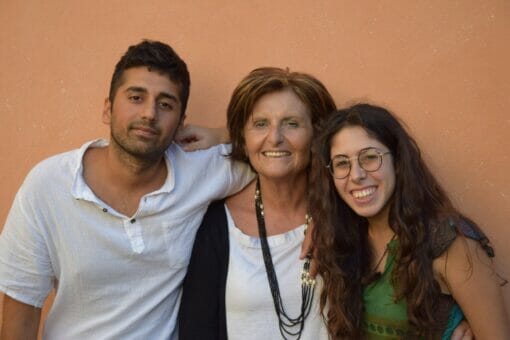 Sandra Mugnaioni (Italy), a retired teacher – At the Copernico High School in Prato, she has been carrying out a number of projects for about 20 years that make students ‘active citizens’. One of the most interesting projects is that of Peer Educators: the students choose a theme, in agreement with the teachers who support the project, which is different each year: they research the theme, explore the various facets of the chosen theme, then decide what to do. Last year the theme was what is called ‘ecomafias'”. At the end of the course, 700 students from the city’s high schools performed a play, Gardugña, (the Spanish for Our Thing). “In this way the students gain an awareness and the skills to become peer educators, even to those most in difficulty. Then these peer educators, once they graduate, continue to look for opportunities to do good and they do not let their teachers off the hook, so much so that the experience, in high schools and elsewhere, is shared and built on by an increasingly larger group of teachers”. Rolando (Guatemala) – Rolando is the owner of Spokes Cafe . Two years ago, he visited a shelter near his neighbourhood and met Madelyn, to whom he offered work as a barista. He explains: “We try to make our café a springboard for young people like Madelyn, teaching them a trade, so as to break that vicious circle and prepare them to face the world with dignity. Often, they decide to go on to university, and this fills us with joy”.
Sandra Mugnaioni (Italy), a retired teacher – At the Copernico High School in Prato, she has been carrying out a number of projects for about 20 years that make students ‘active citizens’. One of the most interesting projects is that of Peer Educators: the students choose a theme, in agreement with the teachers who support the project, which is different each year: they research the theme, explore the various facets of the chosen theme, then decide what to do. Last year the theme was what is called ‘ecomafias'”. At the end of the course, 700 students from the city’s high schools performed a play, Gardugña, (the Spanish for Our Thing). “In this way the students gain an awareness and the skills to become peer educators, even to those most in difficulty. Then these peer educators, once they graduate, continue to look for opportunities to do good and they do not let their teachers off the hook, so much so that the experience, in high schools and elsewhere, is shared and built on by an increasingly larger group of teachers”. Rolando (Guatemala) – Rolando is the owner of Spokes Cafe . Two years ago, he visited a shelter near his neighbourhood and met Madelyn, to whom he offered work as a barista. He explains: “We try to make our café a springboard for young people like Madelyn, teaching them a trade, so as to break that vicious circle and prepare them to face the world with dignity. Often, they decide to go on to university, and this fills us with joy”.  Madelyn is 21 years old and went to the shelter with her sister. Those who live there are mostly young victims of abuse and exploitation. Some have even been part of a human trafficking scheme. Although the young women are safe in this shelter, many suffer from the stigma attached to living in such a place, and rarely manage to find decent work. Madelyn says that she has always found it difficult to communicate with people: “I still have a long way to go but I am learning little by little. Working here I have discovered a sense of responsibility and that behind every customer there is a person. This job has marked a turning point in my life”.
Madelyn is 21 years old and went to the shelter with her sister. Those who live there are mostly young victims of abuse and exploitation. Some have even been part of a human trafficking scheme. Although the young women are safe in this shelter, many suffer from the stigma attached to living in such a place, and rarely manage to find decent work. Madelyn says that she has always found it difficult to communicate with people: “I still have a long way to go but I am learning little by little. Working here I have discovered a sense of responsibility and that behind every customer there is a person. This job has marked a turning point in my life”.  Maria Liza (Philippines), Chief Prosecutor, Tacloban – The Social Development Centre for Children (SDCC) is a shelter for children located in the northern part of Tacloban City, the island that was severely affected by Typhoon Haiyan in 2013. Today, the centre is in dire straits due to lack of funding. Maria Liza recounts: “So, we went to our mayor and proposed, to start raising funds to cope with the lack of food and medicine, but we also took on board reporting instances of child abuse. But the most important achievement was that we managed to bring the centre to the attention of the public. If we hadn’t gone in there, no one would have admitted to what their living conditions were like. This has created a kind of public ‘concern’ so that the city administration can really take care of these children”.
Maria Liza (Philippines), Chief Prosecutor, Tacloban – The Social Development Centre for Children (SDCC) is a shelter for children located in the northern part of Tacloban City, the island that was severely affected by Typhoon Haiyan in 2013. Today, the centre is in dire straits due to lack of funding. Maria Liza recounts: “So, we went to our mayor and proposed, to start raising funds to cope with the lack of food and medicine, but we also took on board reporting instances of child abuse. But the most important achievement was that we managed to bring the centre to the attention of the public. If we hadn’t gone in there, no one would have admitted to what their living conditions were like. This has created a kind of public ‘concern’ so that the city administration can really take care of these children”.
Stefania Tanesini
For the full stories visit the United World Project webpage
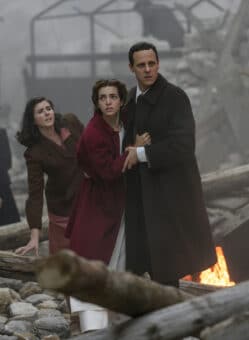
28 Dec 2020 | Non categorizzato
What is the main idea behind the TV Movie “Chiara Lubich, love conquers all”? What does the story of the beginnings of the Focolare Movement have to say in today’s world? Presented to the press today, it will be broadcast during prime television time on 3 January on RAI Uno. An extremely topical film, which has something to say to all of us, by offering the universal fraternity brought by Chiara Lubich as an antidote to the evil in today’s world. This, in a nutshell, was the message that emerged today during the press conference for the presentation of the TV Movie “Chiara Lubich, l’amore vince tutto” (“Chiara Lubich, love conquers all”) to be broadcast on Rai Uno (Italy’s number one national channel) on 3 January, during prime viewing time. The press conference was attended by the director of Rai Uno – Stefano Colletta, the head of Rai Fiction – Maria Pia Ammirati, Eliseo Multimedia producer – Luca Barbareschi, the leading actress – Cristiana Capotondi and the actress Aurora Ruffino. Maurizio Fugatti, the president of the Province of Trent where the film was shot, also spoke. “It is a film that in this period of great suffering which is so hard for us just like this Covid period, becomes a powerful metaphor of hope and courage. A group of young people who decide to believe in a dream. When? During the war”. This was the gamble Luca Barbareschi decided to take in producing the story of Chiara Lubich. “I hope this film is seen in a light where the figure of Chiara (…) becomes a symbol of simplicity and passion, of courage, of the desire to bring people back together. The symbol of the hearth (focolare), being around the fire, around a light”. 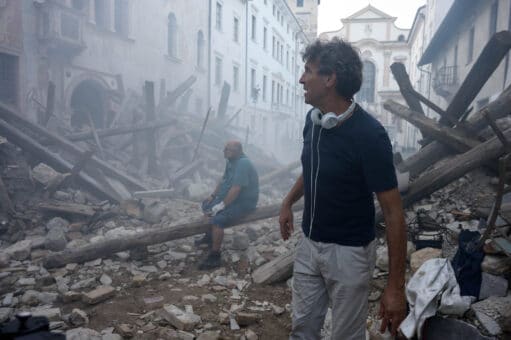 Italian screenwriter, Giacomo Campiotti, agreed, whilst admitting that this had been the most difficult script he had ever written, an exciting undertaking nevertheless. “I tried to make my contribution by telling a story for everyone,” he explained. “Chiara Lubich is by no means a story just for the Christian world. Her idea was to speak to everyone”. Recalling that Chiara’s motto was the Gospel phrase “That all may be one” (cf. Jn 17:21), he added: “Chiara did not want to found anything but each of us has incredible power. When a person begins to realise what they believe in, they create a magnetism around them that changes the world. This is what great characters have done. And these characters can be of great help, a great inspiration to everyone.”
Italian screenwriter, Giacomo Campiotti, agreed, whilst admitting that this had been the most difficult script he had ever written, an exciting undertaking nevertheless. “I tried to make my contribution by telling a story for everyone,” he explained. “Chiara Lubich is by no means a story just for the Christian world. Her idea was to speak to everyone”. Recalling that Chiara’s motto was the Gospel phrase “That all may be one” (cf. Jn 17:21), he added: “Chiara did not want to found anything but each of us has incredible power. When a person begins to realise what they believe in, they create a magnetism around them that changes the world. This is what great characters have done. And these characters can be of great help, a great inspiration to everyone.” 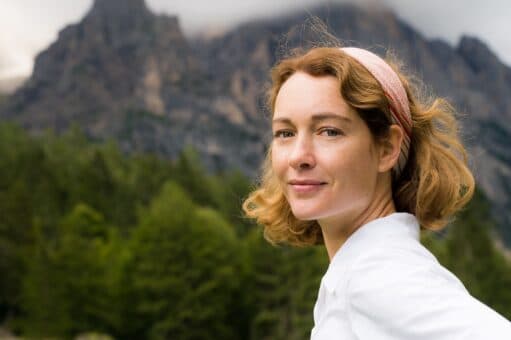 “I take home a really beautiful experience of great spirituality, few things have been as all-encompassing,” confides Cristiana Capotondi. For the leading actress, Chiara Lubich is someone who has always remained young, “because she had the strength to challenge conventions and stereotypes, open doors, talk to the Jewish world, talk to the Islamic world, talk to the Orthodox Church. It is as if she had no memory, no superstructures. I personally find this very youthful. When we grow up we become structured, we start having fears. She was a woman who had no fears. At this current moment in history, I believe her message has extraordinary political strength.
“I take home a really beautiful experience of great spirituality, few things have been as all-encompassing,” confides Cristiana Capotondi. For the leading actress, Chiara Lubich is someone who has always remained young, “because she had the strength to challenge conventions and stereotypes, open doors, talk to the Jewish world, talk to the Islamic world, talk to the Orthodox Church. It is as if she had no memory, no superstructures. I personally find this very youthful. When we grow up we become structured, we start having fears. She was a woman who had no fears. At this current moment in history, I believe her message has extraordinary political strength.  Aurora Ruffino who plays an important role as one of Lubich’s first companions said she was struck by how Chiara and her companions also lived with the uncertainty of tomorrow: “A situation similar to what we are living today. In spite of this, she was absolutely certain that things would go well, that God would somehow find a way to make things go well for her. That really struck me. (…) When you do good it always comes back to you. And she lived absolutely certain of this”. Stefano Coletta is in no doubt as to why RAI Uno chose to open 2021 with this project: “The film condenses the story of Chiara Lubich in a very straightforward manner and without rhetoric. The story of a woman who had truly encountered God and had encountered him in action, rather than in mysticism and contemplative activity. She was a very practical woman who lived during a very complicated time like the war with an almost political conviction that every encounter deserved attention, curiosity and intelligence. It is no coincidence that she was a sign of ecumenical dialogue right to the end; she encountered extremely diverse spiritualities without prejudice”. For Maria Pia Ammirati, the story told in the film has a hagiographic character, but not in the usual sense of the word. “Like all real hagiographies, the saints are first and foremost normal men and women. That’s why 2021 is getting off to a really good start. This story is a viaticum and a positive start in a situation that we know is dark and allienating. Chiara’s design was that of rapprochement, starting from small societies, solidarity, the common good and love, as it says in the film’s title”.
Aurora Ruffino who plays an important role as one of Lubich’s first companions said she was struck by how Chiara and her companions also lived with the uncertainty of tomorrow: “A situation similar to what we are living today. In spite of this, she was absolutely certain that things would go well, that God would somehow find a way to make things go well for her. That really struck me. (…) When you do good it always comes back to you. And she lived absolutely certain of this”. Stefano Coletta is in no doubt as to why RAI Uno chose to open 2021 with this project: “The film condenses the story of Chiara Lubich in a very straightforward manner and without rhetoric. The story of a woman who had truly encountered God and had encountered him in action, rather than in mysticism and contemplative activity. She was a very practical woman who lived during a very complicated time like the war with an almost political conviction that every encounter deserved attention, curiosity and intelligence. It is no coincidence that she was a sign of ecumenical dialogue right to the end; she encountered extremely diverse spiritualities without prejudice”. For Maria Pia Ammirati, the story told in the film has a hagiographic character, but not in the usual sense of the word. “Like all real hagiographies, the saints are first and foremost normal men and women. That’s why 2021 is getting off to a really good start. This story is a viaticum and a positive start in a situation that we know is dark and allienating. Chiara’s design was that of rapprochement, starting from small societies, solidarity, the common good and love, as it says in the film’s title”.
Stefania Tanesini
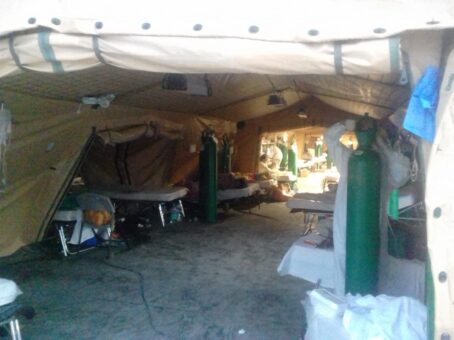
2 Sep 2020 | Non categorizzato
Combining fatherhood and professional life according to Gospel values: here’s the testimony of a Peruvian doctor at the forefront of the fight against COVID-19. I have been a doctor for 25 years and a father for 17, but I realise that I have not yet learned to be both and keep to the values I believe in. These pandemic times are proving to be a real lesson for me to grow in both roles, especially in parts of it that have so far been underestimated not only by me but by most people.  Since the beginning of this pandemic I have worked in a Covid field hospital for patients in the city of Piura in northern Peru, the first in the city. I look after those who are hospitalised and have seen more patients die in the last 3 months than in all my 25 years of medical practice. I trained in one of the best medical schools in the country, with its academic prestige and scientific rigor. Yet this terrible disease has uncovered the limits, impotence and frustration of medical science in the face of this previously unknown virus. In spite of administering oxygen massively and the therapies provided by science, I have seen my patients suffer quite a lot and die of asphyxia. Every day we are faced with the lack of staff and equipment in a hospital like ours, in a poor country. How many times have I felt powerless and frustrated facing my patients, when the disease became aggressive! In the midst of general bewilderment, you could hear them shouting: “I am thirsty! Water please! Give me some water! Water!” Other times people would complain and, only when approaching them, asking if they wanted to drink, would they nod their heads. That’s how, in addition to my medical work, I started to give drinks to everyone who asked me, fix their pillows, hold their hands between mine, caress their foreheads, massage their backs when they asked me, or pass them the bucket to urinate. Or I would simply help them walk, pray with them or for them and, in the end, try to comfort them in their last moments. I understood that there are two dimensions to the medical profession: an authority supported by science which often heals, as well as the human dimension, based on mercy and love, which come from God and can be expressed in simple, everyday acts which often heal the soul. Science and humanity, knowledge and mercy, body and soul, man and God, reason and faith: it is a two-faced coin that makes our giving and living full. It is a delicate balance to be achieved. Between the exhausting work in the hospital, the overload of intense emotions and my weaknesses, I went home for dinner just hoping to rest and let off steam. My eldest son, in the midst of adolescence, frustrated by the lockdown and with all the energy of youth, started arguing with everyone, especially with me. He treated me like an adversary or an enemy, and at the table it was like being on a battlefield. Initially, falling victim to my passions and impulsiveness, we clashed in bitter fights with offensive tones. For the umpteenth time I saw my authority compromised. My attempts to impose it by force made things worse. I rediscovered other aspects of being a father, such as mercy and humility, and so I began to remain silent and offer God my forgiveness in the face of the offenses, as well as express it and ask forgiveness when I realized I had gone too far. I tried to read in my son’s aggressive attitude a cry for help and affection, keep silent more often and tone down the discussion, and continue praying alone and at home even when it all seemed useless. Little by little our relationship has been normalising and returning to the usual father-son dynamics. Once again, there are these two main pillars: authority and mercy. Are they not expressions of divine life?
Since the beginning of this pandemic I have worked in a Covid field hospital for patients in the city of Piura in northern Peru, the first in the city. I look after those who are hospitalised and have seen more patients die in the last 3 months than in all my 25 years of medical practice. I trained in one of the best medical schools in the country, with its academic prestige and scientific rigor. Yet this terrible disease has uncovered the limits, impotence and frustration of medical science in the face of this previously unknown virus. In spite of administering oxygen massively and the therapies provided by science, I have seen my patients suffer quite a lot and die of asphyxia. Every day we are faced with the lack of staff and equipment in a hospital like ours, in a poor country. How many times have I felt powerless and frustrated facing my patients, when the disease became aggressive! In the midst of general bewilderment, you could hear them shouting: “I am thirsty! Water please! Give me some water! Water!” Other times people would complain and, only when approaching them, asking if they wanted to drink, would they nod their heads. That’s how, in addition to my medical work, I started to give drinks to everyone who asked me, fix their pillows, hold their hands between mine, caress their foreheads, massage their backs when they asked me, or pass them the bucket to urinate. Or I would simply help them walk, pray with them or for them and, in the end, try to comfort them in their last moments. I understood that there are two dimensions to the medical profession: an authority supported by science which often heals, as well as the human dimension, based on mercy and love, which come from God and can be expressed in simple, everyday acts which often heal the soul. Science and humanity, knowledge and mercy, body and soul, man and God, reason and faith: it is a two-faced coin that makes our giving and living full. It is a delicate balance to be achieved. Between the exhausting work in the hospital, the overload of intense emotions and my weaknesses, I went home for dinner just hoping to rest and let off steam. My eldest son, in the midst of adolescence, frustrated by the lockdown and with all the energy of youth, started arguing with everyone, especially with me. He treated me like an adversary or an enemy, and at the table it was like being on a battlefield. Initially, falling victim to my passions and impulsiveness, we clashed in bitter fights with offensive tones. For the umpteenth time I saw my authority compromised. My attempts to impose it by force made things worse. I rediscovered other aspects of being a father, such as mercy and humility, and so I began to remain silent and offer God my forgiveness in the face of the offenses, as well as express it and ask forgiveness when I realized I had gone too far. I tried to read in my son’s aggressive attitude a cry for help and affection, keep silent more often and tone down the discussion, and continue praying alone and at home even when it all seemed useless. Little by little our relationship has been normalising and returning to the usual father-son dynamics. Once again, there are these two main pillars: authority and mercy. Are they not expressions of divine life?
Edited by Gustavo E. Clariá



 Sandra Mugnaioni (Italy), a retired teacher – At the Copernico High School in Prato, she has been carrying out a number of projects for about 20 years that make students ‘active citizens’. One of the most interesting projects is that of Peer Educators: the students choose a theme, in agreement with the teachers who support the project, which is different each year: they research the theme, explore the various facets of the chosen theme, then decide what to do. Last year the theme was what is called ‘ecomafias'”. At the end of the course, 700 students from the city’s high schools performed a play, Gardugña, (the Spanish for Our Thing). “In this way the students gain an awareness and the skills to become peer educators, even to those most in difficulty. Then these peer educators, once they graduate, continue to look for opportunities to do good and they do not let their teachers off the hook, so much so that the experience, in high schools and elsewhere, is shared and built on by an increasingly larger group of teachers”. Rolando (Guatemala) – Rolando is the owner of
Sandra Mugnaioni (Italy), a retired teacher – At the Copernico High School in Prato, she has been carrying out a number of projects for about 20 years that make students ‘active citizens’. One of the most interesting projects is that of Peer Educators: the students choose a theme, in agreement with the teachers who support the project, which is different each year: they research the theme, explore the various facets of the chosen theme, then decide what to do. Last year the theme was what is called ‘ecomafias'”. At the end of the course, 700 students from the city’s high schools performed a play, Gardugña, (the Spanish for Our Thing). “In this way the students gain an awareness and the skills to become peer educators, even to those most in difficulty. Then these peer educators, once they graduate, continue to look for opportunities to do good and they do not let their teachers off the hook, so much so that the experience, in high schools and elsewhere, is shared and built on by an increasingly larger group of teachers”. Rolando (Guatemala) – Rolando is the owner of  Madelyn is 21 years old and went to the shelter with her sister. Those who live there are mostly young victims of abuse and exploitation. Some have even been part of a human trafficking scheme. Although the young women are safe in this shelter, many suffer from the stigma attached to living in such a place, and rarely manage to find decent work. Madelyn says that she has always found it difficult to communicate with people: “I still have a long way to go but I am learning little by little. Working here I have discovered a sense of responsibility and that behind every customer there is a person. This job has marked a turning point in my life”.
Madelyn is 21 years old and went to the shelter with her sister. Those who live there are mostly young victims of abuse and exploitation. Some have even been part of a human trafficking scheme. Although the young women are safe in this shelter, many suffer from the stigma attached to living in such a place, and rarely manage to find decent work. Madelyn says that she has always found it difficult to communicate with people: “I still have a long way to go but I am learning little by little. Working here I have discovered a sense of responsibility and that behind every customer there is a person. This job has marked a turning point in my life”. 
 Italian screenwriter, Giacomo Campiotti, agreed, whilst admitting that this had been the most difficult script he had ever written, an exciting undertaking nevertheless. “I tried to make my contribution by telling a story for everyone,” he explained. “Chiara Lubich is by no means a story just for the Christian world. Her idea was to speak to everyone”. Recalling that Chiara’s motto was the Gospel phrase “That all may be one” (cf. Jn 17:21), he added: “Chiara did not want to found anything but each of us has incredible power. When a person begins to realise what they believe in, they create a magnetism around them that changes the world. This is what great characters have done. And these characters can be of great help, a great inspiration to everyone.”
Italian screenwriter, Giacomo Campiotti, agreed, whilst admitting that this had been the most difficult script he had ever written, an exciting undertaking nevertheless. “I tried to make my contribution by telling a story for everyone,” he explained. “Chiara Lubich is by no means a story just for the Christian world. Her idea was to speak to everyone”. Recalling that Chiara’s motto was the Gospel phrase “That all may be one” (cf. Jn 17:21), he added: “Chiara did not want to found anything but each of us has incredible power. When a person begins to realise what they believe in, they create a magnetism around them that changes the world. This is what great characters have done. And these characters can be of great help, a great inspiration to everyone.”  “I take home a really beautiful experience of great spirituality, few things have been as all-encompassing,” confides Cristiana Capotondi. For the leading actress, Chiara Lubich is someone who has always remained young, “because she had the strength to challenge conventions and stereotypes, open doors, talk to the Jewish world, talk to the Islamic world, talk to the Orthodox Church. It is as if she had no memory, no superstructures. I personally find this very youthful. When we grow up we become structured, we start having fears. She was a woman who had no fears. At this current moment in history, I believe her message has extraordinary political strength.
“I take home a really beautiful experience of great spirituality, few things have been as all-encompassing,” confides Cristiana Capotondi. For the leading actress, Chiara Lubich is someone who has always remained young, “because she had the strength to challenge conventions and stereotypes, open doors, talk to the Jewish world, talk to the Islamic world, talk to the Orthodox Church. It is as if she had no memory, no superstructures. I personally find this very youthful. When we grow up we become structured, we start having fears. She was a woman who had no fears. At this current moment in history, I believe her message has extraordinary political strength. 